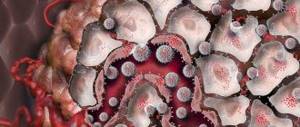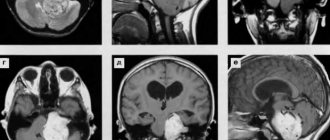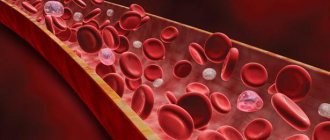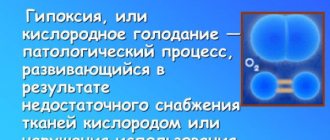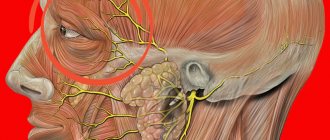Cerebral palsy, or cerebral palsy, is a movement disorder associated with brain damage. This term includes disorders that arose during the perinatal period and become apparent in the first year of the baby’s life. Cerebral palsy has a non-progressive course, and with due attention to this pathology, partial correction is possible.
One of the important questions is why are children born with cerebral palsy? The answer helps to understand the characteristics of children suffering from this disorder and what can be done to reduce the manifestations of this disease.
Cerebral palsy is a movement disorder associated with brain damage.
General description of cerebral palsy
Cerebral palsy is accompanied by a variety of motor disorders that can significantly reduce the quality of life. It is for this reason that treatment of cerebral palsy is an extremely important process, the main goal of which is to save a child’s life.
Due to damage to brain structures, the functioning of individual muscle fibers or entire muscle groups is disrupted. Treatment of cerebral palsy is aimed at suppressing the pathological areas and some development of collateral innervation pathways to try to compensate for the pathological process.
In general, cerebral palsy is accompanied by a number of disorders, accompanied by:
- Muscle tension;
- Spastic muscle contractures;
- Uncontrolled movements;
- Gait movement disorders;
- Limited mobility;
Cerebral palsy in children may be accompanied by visual and auditory abnormalities and speech impairment. Often the disease can be accompanied by epileptic seizures and disturbances in mental, mental and social activity.
Often, such patients are not able to care for themselves - they do not control the process of urination, cannot feed themselves, are prone to the formation of bedsores, as well as difficulty breathing due to inadequate functioning of the muscular system.
It is known that treatment for cerebral palsy serves to compensate for impaired functions, but the disease is not able to progress, since the pathological process is localized to a point and is not able to spread to nearby areas.
Causes of cerebral palsy
The causes of cerebral palsy in newborns can be different, but any type will have a common manifestation. Remember that the disease does not progress, and such a feeling is only subjective - as the patient grows older, he cannot care for himself, which is similar to signs of progression.
The theory states that paralysis may occur due to one of the following reasons:
- Developmental disorders of the brain;
- Chronic hypoxic processes during childbirth or pregnancy;
- Past infectious diseases;
- Rh conflict or other immune reactions on the part of the mother;
- Traumatic damage to the brain during pregnancy;
- Toxic poisoning of the fetus;
The threat of cerebral palsy almost always exists, so mothers should be especially careful about their health and the health of their baby. Each case of the appearance of this pathology is strictly individual and can only be similar in general terms to the reasons listed above.
Often this pathology is differentiated to more easily understand the problems and determine the method of maintenance therapy. Sometimes a mild form of cerebral palsy may occur, which is much easier to tolerate and in such cases it is possible to train the child for social life. A diagnosis of cerebral palsy is not a death sentence!
In general, the causes of pathology can be divided into several large classes:
- Genetic genesis;
- Ischemic genesis;
- Infectious genesis;
- Physical factors;
- Mechanical;
Often the threat of cerebral palsy is announced when various vascular pathologies of the brain appear, but this approach is absolutely wrong. Rupture of cerebral vessels in children is impossible due to their anatomical and morphological features. However, mechanical trauma can cause them to rupture, which will contribute to the development of the disease.
Remember that it is extremely important to determine the exact cause of the deviation so that treatment for cerebral palsy is as effective as possible.
Classification of pathology
There are several types of cerebral palsy, which differ from each other in their characteristic features and set of symptoms .
| Form | Peculiarities |
| Spastic diplegia | This form is the most common. It occurs due to damage to areas of the brain that are responsible for the motor activity of the limbs. In children, in the first months after birth, partial or complete paralysis of the legs or arms is observed. |
| Atonic-astatic | Pathology occurs as a consequence of abnormal development or damage to the cerebellum. The child is unstable, his coordination of movements is impaired, and there is also a decreased tone of muscle tissue. |
| Hemiparetic | The subcortical and cortical areas of one of the cerebral hemispheres are affected. In this case, motor disturbances are observed only on one side. |
| Double hemiplegia | Damage occurs in both hemispheres of the brain at once. This form is considered the most dangerous, as it often leads to complete paralysis. |
| Hyperkinetic | Caused by lesions of the subcortical areas of the brain. Often develops against the background of a spastic form. A child suffering from this type of cerebral palsy is prone to making uncontrolled body movements. Often this manifestation intensifies in those moments when the baby is overexcited, nervous, and worried. |
Depending on the age of the child, it is customary to distinguish the early form (the first signs appear immediately after birth and before 6 months of age), the initial residual form (6-24 months), and the late residual form (over 2 years).
According to severity they are distinguished:
- A mild form in which minor deviations in motor activity are observed. At the same time, the child is able to do without the help of strangers, can dress independently, eat, play, and attend children's educational institutions.
- The average form, when the baby requires outside help in carrying out complex tasks. However, such a child can attend general education institutions and study successfully.
- A severe form in which the child cannot do without help, because in this case he is not able to perform even the simplest actions.
Symptom complex of cerebral palsy
In modern medicine, there are 3 stages of cerebral palsy, each of which is characterized by its own symptoms. 3 degrees of cerebral palsy are divided into:
- Early – up to 5 months;
- Initial residual – up to 3 years;
- Late residual – more than 3 years;
When a diagnosis of cerebral palsy is made, symptoms and stages are mentioned, which makes it possible to distinguish mild cerebral palsy from more severe manifestations. Early symptoms of the disease, the weakening of which may symbolize the onset of recovery:
- The patient's development is delayed - inability to support the head, sit, grasp objects, etc.;
- Weakening of various children's reflexes - grasping, sucking, etc. and their long-term preservation in behavioral reactions;
- Using predominantly one of two limbs in daily activities due to abnormal muscle tone;
Cerebral palsy in a child may be suspected based on one of the listed signs. They can be of varying intensity, so it is necessary to be especially attentive to the child’s behavior and his reaction to surrounding objects and events. It is important to understand what cerebral palsy is in order to adequately assess your baby’s condition.
In addition, at a later stage, a whole complex of visually identifiable symptoms appears, symbolizing cerebral palsy in children:
- The appearance of skeletal deformity;
- The appearance of joint contractures;
- Frequently occurring convulsive syndrome;
- Violation of swallowing, chewing and other physiological movements;
- Hearing, speech and visual disorders;
- Pathology of the dental apparatus;
- Pathology of muscle tone;
Remember that at every age there are some diagnostic signs that you should pay attention to. Often, by identifying any changes, you can make a prediction about the improvement or deterioration of the patient’s general condition.
Symptoms and signs
A child suffering from cerebral palsy exhibits the following symptoms :
- The limb located on the affected side has a shorter length.
- Damage to the joints, resulting in loss of mobility.
- The appearance of seizures, which occur in the first days of a child’s life.
- Disturbance in the swallowing process; when feeding, the child often chokes.
- Hearing loss, the baby does not respond to extraneous sounds.
- Lack of speech in a child aged 1 year. The baby cannot move his lips and tongue correctly to pronounce certain sounds.
- Decreased vision (strabismus, myopia).
- Pathologies of the dentition (absence of teeth at the age when they should already be erupting, incorrect placement of teeth, thinned enamel).
- Involuntary urination and defecation.
- Motor dysfunction.
- Decreased muscle tone.
Types of cerebral palsy
Pathology today can be classified in several ways, but each of them has its own specific character. Actually, the syndrome itself was successfully classified according to ICD-10, which greatly facilitates the professional work of doctors:
- Spastic forms;
- Dyskinetic;
- Ataxic;
- Mixed;
- Unspecified form;
It is important to understand that diseases can manifest themselves in different ways, so sometimes it is impossible to accurately assess the baby’s condition at one time. This process is especially difficult in the third stage of paralysis.
It is important to remember that it is important to identify and treat this disease in time, as it is chronic. Without appropriate care and therapy, a number of complications may occur that will not be easy to compensate.
The group of complications includes disability, disturbances in social adaptation, the appearance of myocontractures, as well as the inability to eat due to paresis of the pharyngeal muscles. Often this can lead to a rather painful death due to the inability to provide for one’s own energy needs.
Diagnostic principles
In order to make a correct diagnosis, doctors are required to quickly determine the diagnostic method. Such patients are treated by neurologists who adhere to a specific examination plan:
- Carrying out a thorough examination - assessment of reflexes, visual and hearing acuity, condition of the muscular system;
- Conducting electroencephalography;
- Carrying out electroneurography and electromyography;
- MRI and CT;
As practice shows, only a full range of diagnostic measures will make it possible to find out the true cause of the disease, since often the problem cannot be identified without non-invasive methods.
For a more complete assessment of health, consultation meetings are held with speech therapists, ophthalmologists, psychiatrists, ENT specialists and epileptologists. Only after carrying out the entire range of measures will it be possible to determine the cause and draw up a plan for future treatment.
The therapy process is an extremely long, almost lifelong process, so the use of incorrect treatment methods will only lead to loss of time and the baby’s health (not only physical, but also mental). Adequately evaluate the actions and conclusions of the attending physician to prevent any oversight.
Complications and consequences
DPC leads to the development of such serious complications as:
- Disorders of the musculoskeletal system (pathological bending of the arms, which in severe cases can provoke dislocation of the joints, deformation of the foot when the baby moves only on his toes, curvature of the spine and persistent violation of posture, as a result of which the child’s body loses its symmetry).
- Speech disturbances to the point of complete absence.
- Delayed mental development , problems with adaptation in a team.
Principles of therapy for patients with cerebral palsy
When carrying out therapeutic measures, they try to eliminate motor disorders, speech defects and correct the patient’s mental state. Motor deviations are corrected through the formation of correct muscle stereotypes. This effect is achieved through various physical procedures and practices.
In addition to eliminating unpleasant symptoms, such patients are taught various social, motor and other skills, which allows them to activate and accelerate their mental and mental development. This effect will allow them to socialize in society in the future and do relatively normal things.
Unfortunately, there is no single method for treating cerebral palsy today. When using different methods together, it is possible to achieve some results. Similar methods include:
- Physical therapy;
- Long massage treatments;
- The use of pharmacological agents to normalize muscle tone;
Surgical methods are often used to restore the functionality of the muscular system, but it is used only in cases where there are no effects from standard and generally accepted therapy. During surgical operations, tendon and muscle plastic surgery is performed, which allows the normal shape and structure of muscle tissue to be restored.
In the Russian Federation, pharmacological agents are actively used to activate cerebral circulation (Cerebrolysin, Actovegin, Glycine, etc.). Antioxidants, biologically active substances and other agents that activate metabolic processes in the body and improve vascular tone have also found their use.
Recently, considerable attention has been paid to stem cells, as scientists believe that they will be the ones that will make it possible to treat such patients. By changing their structure and properties, they can be “transformed” into the desired type of tissue (for example, nervous) and implanted into the affected areas. Developments in this area are actively underway, but a breakthrough is not planned in the near future.



